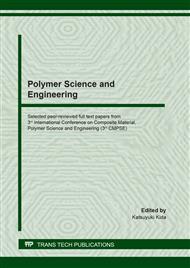p.157
p.165
p.174
p.182
p.188
p.193
p.199
p.205
p.211
Composite Cement Mortar Mix Using GGBS for Wall Finishing
Abstract:
Ground Granulated Blast-Furnace Slag (GGBS) being used as partial cement replacement in mortar mixed for wall finishing. This research was conducted to determine the mechanical properties of cement mortar when added with GGBS. GGBS as generally is a by-product from the production of waste materials from Iron Industry. Mortar is a mixture of cement, sand and water and normally being used as wall finishing and bricklaying binder. The additional of GGBS being integrated with the cement mortar mix to enhance the strength of the building element. Appropriate mixture proportions and mixing procedures are in the range of 10% to 40% of GGBS in the cement mortar. The testing includes the compressive strength, flexural strength test and split tensile strength test. Comparison between the control sample and the research sample were done to determine the suitability to be used in industries. The result obtains from this research shows that cement mortar with 30% GGBS is the optimum composition because it gives the highest result of strength in term of compression, flexural and tensile compare to the control sample. This research proved that GGBS can be effectively used in cement mortar for wall finishing.
Info:
Periodical:
Pages:
205-210
Citation:
Online since:
August 2020
Keywords:
Price:
Сopyright:
© 2020 Trans Tech Publications Ltd. All Rights Reserved
Share:
Citation:


